
Overview
Construction is the process of creating or building physical structures, infrastructure, or facilities. It involves the planning, designing, and execution of projects to bring them from conceptualization to completion. Construction projects can range from small-scale residential buildings to large-scale commercial complexes, bridges, highways, and even entire cities. The construction process typically begins with the preparation of the site, including clearing and leveling the land, and establishing the necessary infrastructure such as access roads and utilities. The next step involves the creation of a detailed design, often developed by architects and engineers, which outlines the specifications, materials, and construction methods to be used. Once the design is finalized, construction activities commence, which may involve various trades and disciplines such as excavation, foundation work, structural framing, electrical and plumbing installations, and finishing work. Construction workers, including laborers, skilled tradespeople, and project managers, collaborate to ensure that the project progresses according to the plans and meets the required standards and regulations.
GAO Tek’s moisture analyzers and meters have the following applications in construction:
- Concrete and Mortar: Moisture content is a critical factor in the quality and performance of concrete and mortar. Excessive moisture can weaken the structure and lead to issues like cracking and shrinkage. GAO Tek moisture analyzers are used to determine the moisture content of aggregates, cement, and other components before mixing, ensuring the proper water-to-cement ratio.
- Wood and Timber: Moisture content in wood and timber is essential to prevent issues like warping, swelling, and decay. GAO’s moisture meters are used to measure the moisture content in lumber, plywood, and other wood products. Builders and contractors can ensure that the wood is adequately dried or acclimated before installation to maintain structural integrity.
- Flooring: Moisture problems in flooring can lead to adhesive failures, buckling, and other issues. Our moisture meters are used to assess the moisture levels in concrete slabs or subfloors before installing hardwood, laminate, or other flooring materials. This helps determine if additional measures, such as moisture barriers or drying, are necessary.
- Roofing: Moisture problems in roofing materials can cause leaks, deterioration, and structural damage. GAO’s moisture analyzers and meters are used to evaluate the moisture content in roofing materials like insulation, membranes, and roofing felts. This helps identify areas of potential water intrusion and enables proactive measures to prevent damage.
- Insulation: Moisture can affect the performance of insulation materials such as fiberglass, cellulose, or foam. GAO’s moisture meters are used to assess the moisture levels within insulation to ensure its effectiveness and prevent mold growth or degradation. This is particularly important in areas prone to high humidity or moisture infiltration.
- Painting and Coating: Moisture content in substrates can impact the adhesion and durability of paints and coatings. GAO Tek moisture meters are used to measure the moisture levels in walls, concrete surfaces, and other substrates before applying paints or coatings. This helps prevent problems like peeling, blistering, or premature failure of the coatings.
- Drying and Curing: GAO’s moisture analyzers and meters are useful during the drying and curing processes in construction. They help monitor the moisture content in materials like plaster, stucco, or concrete during the drying or curing phases. This ensures that the materials reach the desired moisture levels for optimal performance and strength.
Complying with Government Regulations
GAO Tek’s moisture analyzers and meters comply or help our customers comply with the U.S. government regulations such as:
- Occupational Safety and Health Administration (OSHA): OSHA sets and enforces safety and health regulations in the United States. While OSHA does not have specific regulations solely focused on moisture analyzers and meters, it provides guidelines and regulations related to general safety and health in the construction industry. Compliance with OSHA standards is crucial to ensure a safe working environment for construction workers.
- National Institute of Standards and Technology (NIST): NIST is responsible for promoting measurement standards and metrology in the United States. While NIST does not have specific regulations for moisture analyzers and meters, it provides guidance on calibration and accuracy requirements for various measuring instruments. Manufacturers and users of moisture analyzers and meters may refer to NIST guidelines for calibration and quality assurance.
- Construction Specifications Institute (CSI) MasterFormat: The CSI MasterFormat is a standardized system for organizing construction-related information, including specifications, contracts, and project documentation. Moisture analyzers and meters may be referenced within specific divisions of the MasterFormat, such as Division 7: Thermal and Moisture Protection, which covers aspects related to moisture control, insulation, and waterproofing.
- Building Codes and Standards: Building codes and standards are established at the state and local levels and can vary across jurisdictions. These codes and standards provide guidelines for the design, construction, and maintenance of buildings and structures. They may include provisions related to moisture management, insulation, waterproofing, and other aspects that could impact the use of moisture analyzers and meters during construction.
GAO Tek’s moisture analyzers and meters comply or help our clients comply with the Canadian regulations such as:
- Canadian Standards Association (CSA): The CSA develops and publishes standards and codes that cover various aspects of construction, including testing and measurement equipment. While there may not be specific regulations solely focused on moisture analyzers and meters, the CSA provides standards related to testing equipment and metrology that may be relevant to their use in the construction industry.
- Occupational Health and Safety (OHS) Regulations: Occupational health and safety regulations are established at the provincial and territorial levels in Canada. Each province and territory has its own OHS legislation that sets out safety requirements for construction sites. While there may not be specific regulations for moisture analyzers and meters, general workplace safety regulations will apply to their use in construction.
- National Building Code of Canada (NBCC): The NBCC provides guidelines for the design, construction, and occupancy of buildings in Canada. While moisture analyzers and meters may not have specific regulations, the NBCC includes provisions related to moisture management, insulation, and building envelope performance, which indirectly impact the use of these instruments during construction.
- Construction Specifications Canada (CSC) MasterFormat: The CSC MasterFormat is a standardized system for organizing construction-related information, including specifications, contracts, and project documentation. Moisture analyzers and meters may be referenced within specific divisions of the MasterFormat, such as Division 7: Thermal and Moisture Protection, which covers aspects related to moisture control, insulation, and waterproofing.
- Provincial and Municipal Building Codes: Provinces and territories in Canada have their own building codes, which are usually based on the National Building Code of Canada. These codes include specific requirements and standards for construction projects within their jurisdictions. Moisture management and related aspects may be addressed in these codes, indirectly influencing the use of moisture analyzers and meters during construction.
Case Studies of Moisture Analyzers and Meters in Construction
Here are some practical examples of using moisture analyzers and meters in construction:
ABC Construction, based in New York, USA, implemented moisture analyzers and meters during the construction of a high-rise residential building. Their goal was to monitor and control the moisture content in concrete slabs. By regularly measuring moisture levels, ABC Construction ensured proper curing and minimized issues like cracking and curling. This proactive approach resulted in high-quality, durable concrete floors that exceeded industry standards.
XYZ Roofing Contractors, operating in Vancouver, Canada, utilized moisture analyzers and meters during the installation of a commercial roofing system. Their focus was on accurate moisture analysis in roofing materials to identify potential leaks and prevent moisture-related damage. By maintaining proper moisture levels, XYZ Roofing Contractors ensured a watertight and durable roof that provided reliable protection against the elements.
LMN Building Solutions, located in Toronto, Canada, incorporated moisture analyzers and meters in the construction of a mixed-use development. Their aim was to monitor moisture levels in building envelopes, including walls, roofs, and insulation. By proactively monitoring for moisture intrusion, LMN Building Solutions prevented mold growth and preserved the integrity of the building envelope, ensuring a comfortable and healthy indoor environment for occupants.
PQR Flooring Specialists, operating in Los Angeles, USA, employed moisture analyzers and meters during the installation of various types of flooring in a commercial space. Their focus was on moisture control in the subfloor to prevent issues like buckling, adhesive failure, and mold growth. By conducting moisture analysis, PQR Flooring Specialists achieved stable and long-lasting flooring installations that met the expectations of their clients.
STU Construction Services, based in Calgary, Canada, integrated moisture analyzers and meters in the construction of an office building. Their goal was to monitor moisture levels in exterior wall components, such as insulation and sheathing. By proactively monitoring for moisture-related issues, STU Construction Services prevented moisture damage, enhanced energy efficiency, and ensured the long-term durability of the building envelope.
QRS Masonry Contractors, operating in Chicago, USA, implemented moisture analyzers and meters during the construction of a commercial building featuring extensive masonry work. Their objective was to analyze moisture levels in the mortar and bricks. By carefully monitoring moisture content, QRS Masonry Contractors ensured proper curing, minimized shrinkage, and enhanced the strength and longevity of the masonry structures they built.
The main page of the moisture analyzers and meters has more information on GAO’s moisture analyzers and meters and their applications in various industries:
Use of Moisture Analyzers and Meters with Leading Software and Cloud Services in Construction
GAO Tek has used or has facilitated its customers to use GAO’s moisture analyzers and meters with some of the leading software and cloud services in their applications. Examples of such leading software and cloud services include:
- Reporting and Documentation: Cloud services can streamline the reporting and documentation process for moisture-related data in construction. Construction professionals can generate automated reports, track moisture trends, and create documentation for compliance purposes, project management, or client communication, saving time and improving data transparency.
- Data Analytics and Insights: Cloud-based data analytics tools can be applied to moisture analyzer and meter data to derive insights and trends. Construction professionals can utilize advanced analytics techniques, such as data mining, machine learning, or predictive analytics, to identify patterns, forecast potential moisture risks, and optimize construction processes accordingly.
- Predictive Analytics: Cloud-based predictive analytics services leverage historical moisture analyzer and meter data to forecast future moisture conditions in construction materials or structures. These services can provide early warnings, help optimize construction schedules, and inform proactive moisture management strategies.
- Visualization and Reporting Platforms: Cloud services that offer visualization and reporting capabilities allow construction professionals to create interactive dashboards, charts, and reports based on moisture analyzer and meter data. These platforms facilitate data communication, decision-making, and collaboration among project teams and stakeholders.
- Collaborative Data Analysis: Cloud-based collaboration platforms enable multiple stakeholders, such as architects, contractors, and project managers, to analyze and interpret moisture analyzer and meter data together. These platforms provide features for data sharing, version control, and real-time collaboration, promoting effective communication and informed decision-making.
- Data Integration and Workflow Automation: Cloud services that support data integration and workflow automation enable seamless integration of moisture analyzer and meter data with other construction data sources, such as weather data or material specifications. These platforms automate data processing, streamline analysis workflows, and enhance the efficiency of moisture-related tasks in construction projects.
- Real-time Monitoring: Cloud services can enable real-time monitoring of moisture levels in construction materials. Moisture data collected from analyzers and meters can be transmitted to the cloud, allowing project managers and contractors to monitor moisture conditions remotely and take necessary actions promptly.
- Integration with Building Information Modeling (BIM): Cloud platforms can integrate moisture data with BIM software, enabling the visualization of moisture conditions in the context of 3D models. This integration helps in identifying potential moisture-related issues and optimizing construction processes.
- Compliance and Reporting: Cloud-based systems can assist construction companies in complying with regulatory requirements by generating accurate and standardized reports on moisture analysis. These reports can be easily shared with regulatory authorities, clients, or third-party inspectors.
- Data Analytics Platforms: Cloud-based data analytics platforms allow construction professionals to analyze moisture data collected from analyzers and meters. These platforms provide tools for data visualization, statistical analysis, and advanced analytics to derive insights and trends related to moisture levels in construction materials.
- Machine Learning and AI Services: Cloud services equipped with machine learning and artificial intelligence capabilities can analyze moisture data and identify patterns, anomalies, and predictive models. These services can assist in predicting moisture-related issues, optimizing construction processes, and making proactive decisions to mitigate risks.
- Statistical Analysis and Reporting Tools: Cloud services equipped with statistical analysis and reporting tools can assist in conducting in-depth analyses of moisture data. These platforms provide functionalities such as descriptive statistics, regression analysis, hypothesis testing, and generating comprehensive reports for further analysis and decision-making.
- Quality Control and Assurance Systems: Cloud-based quality control and assurance systems can analyze moisture data to ensure compliance with industry standards and specifications. These platforms can identify moisture-related quality issues, track performance metrics, and generate reports to support quality control processes in construction projects.
- Integration with Construction Management Software: Cloud services that integrate with construction management software allow for seamless analysis of moisture data within the project management framework. Integration enables project managers to access moisture analysis results and make informed decisions within a centralized platform.
- Remote Monitoring and Troubleshooting: Cloud services equipped with remote monitoring capabilities can analyze moisture data in real-time and provide alerts or notifications for abnormal moisture conditions. These platforms enable remote troubleshooting, allowing construction professionals to diagnose and address moisture-related issues promptly.
GAO Tek Has Many Customers in Construction
GAO Tek’s moisture analyzers and meters have been used by many customers in construction, including some leading companies.
Here are some of the leading companies in construction:
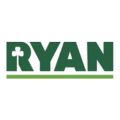 Ryan Companies US, Inc.
Ryan Companies US, Inc.
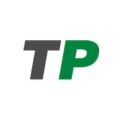 Tutor Perini Corporation
Tutor Perini Corporation
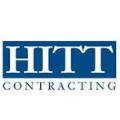 HITT Contracting Inc.
HITT Contracting Inc.
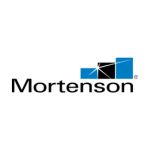 Mortenson Construction Company
Mortenson Construction Company
 Balfour Beatty US Company
Balfour Beatty US Company
 Gilbane Building Company
Gilbane Building Company
 Clark Construction Group, LLC
Clark Construction Group, LLC
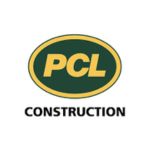 PCL Construction Enterprises, Inc.
PCL Construction Enterprises, Inc.
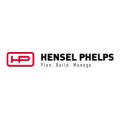 Hensel Phelps Construction Co.
Hensel Phelps Construction Co.
 McCarthy Holdings, Inc.
McCarthy Holdings, Inc.
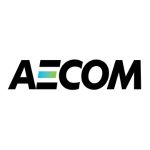 AECOM Company.
AECOM Company.
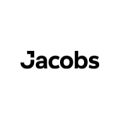 Jacobs Engineering Group Inc.
Jacobs Engineering Group Inc.
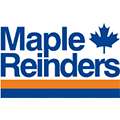 Maple Reinders Group Ltd.
Maple Reinders Group Ltd.
 Stuart Olson Inc.
Stuart Olson Inc.
 Bird Construction Inc.
Bird Construction Inc.
 SNC-Lavalin Group Inc.
SNC-Lavalin Group Inc.
 EllisDon Corporation
EllisDon Corporation
 Aecon Group Inc.
Aecon Group Inc.
More applications of GAO Tek’s moisture analyzers and meters and applications are listed on this page:
